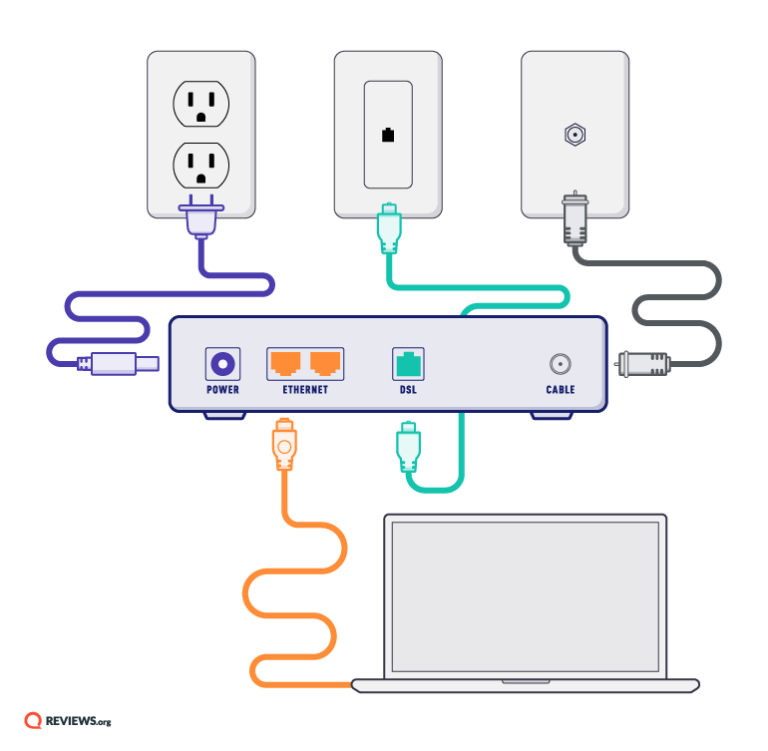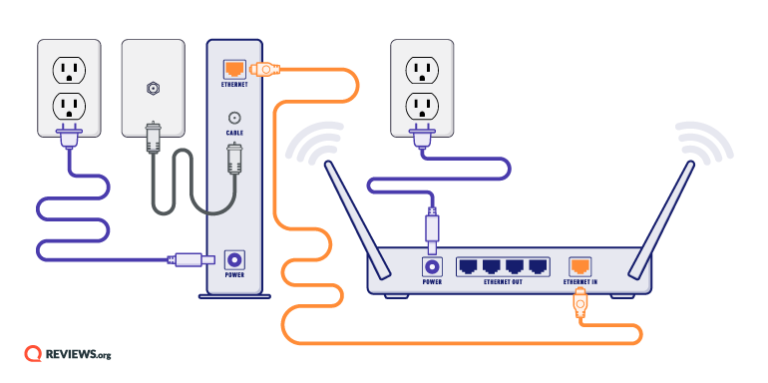Your modem links your home network to your provider’s network, so it’s the first thing you want to hook up when you’re setting up your internet.
To set up your modem (or gateway), plug it into the wall and connect it to your phone jack or cable outlet—depending on the internet you have.
- DSL internet plugs into a phone jack with a phone cord.
- Cable internet plugs into a cable outlet with a coaxial cable.
The front of the modem should have a series of LED indicator lights—take a look to see if they’re on to confirm that the modem is working and connected.
Your modem should come with an Ethernet cable, but if it doesn’t, any old Ethernet cable you have on hand will do. You can plug the Ethernet cable directly into your computer if you want.
But for a standalone modem that doesn’t have a router included, it’s better to connect to a separate router so that you can connect more devices.






